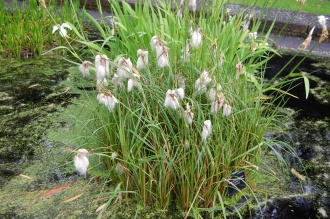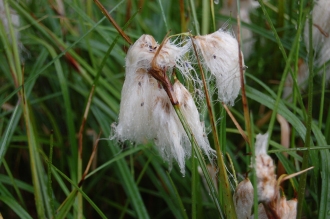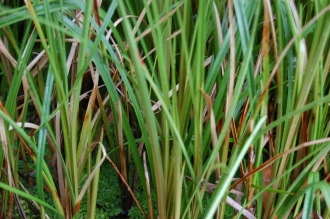Position: Full sun to partial shade
Flowering period: Late spring to early summer
Soil: Wet, poorly drained
Eventual Height: 50cm
Eventual Spread: 30cm
Hardiness: 4a, 4b, 5a, 5b, 6a, 6b, 7a, 7b, 8a, 8b
Family: Cyperaceae
Eriophorum latifolium is an evergreen herbaceous perennial with a clump forming, upright habit. Its dark green leaves are grass like and up to 8mm across. Its wind pollinated white flowers appear in groups of up to five as a masses of cotton at the ends of its leaves. Its seeds, attached to the cotton mass are dispersed by wind.
Eriophorum latifolium, commonly known as Broad Leaved Cotton Grass, or Cotton Sedge, is native to the temperate northern hemisphere, including the UK. In its native habitat it grows in moorland, fens and dunes.
The etymological root of the binomial name Eriophorum is derived from the Greek meaning ‘wool bearing’. Latifolium is derived from the Latin Latus meaning ‘broad’ and folium meaning ‘leaf’.
The landscape architect may find Eriophorum latifolium useful as a native plant for planting in boggy or at the edges of water bodies. It is also a suitable spices for rain gardens. Once established this perennial is drought tolerant.
Ecologically, Eriophorum latifolium is of little wildlife value.
Eriophorum latifolium prefers moist, fertile, poorly drained soils. It tolerates most pH of soil.








Leave a comment